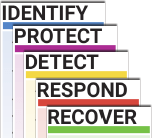
With technology woven into nearly every aspect of education, K-12 schools face growing challenges in keeping students safe online. From blocking harmful content to monitoring student well-being, the landscape of cybersecurity and digital safety is evolving quickly. If your district hasn’t evaluated its options recently, now is a great time to take a fresh look – especially as new innovations and vendor shifts reshape the market.
At Trebron, as a leading K-12 cybersecurity consultant, we work with hundreds of schools to help them choose and implement the right content filtering and cybersecurity solutions. Because of that, we have a front-row seat to the changes happening in this space. Over the past two years, we’ve seen significant advancements, as well as increased competition among vendors. And we expect these trends to continue.
Key Trends in K-12 Content Filtering and Student Safety
Stronger Content Filtering with AI and On-Prem Appliances
The days of simple, one-size-fits-all filtering are fading. Students are becoming more skilled at bypassing restrictions, so vendors are stepping up their game. Many providers are now integrating AI-powered filtering tools to detect and blur inappropriate images, even on uncategorized or allowed websites. Linewize and Deledao are leading in this area.
Some schools are also maintaining on-premise filtering appliances, which can provide:
- Stronger filtering when students are on the school’s network
- Filtering for guest networks and BYOD programs
- More control over security policies compared to cloud-only solutions
The Rise of Student Well-Being Monitoring
While student well-being monitoring is gaining traction, not every district has jumped on board. Some schools see clear value in identifying risks early, while others are still weighing the privacy implications. The reality is that these tools have already helped prevent incidents from escalating into serious harm.
If you’re considering a student well-being monitoring solution, here are some key questions to ask:
- How does the vendor reduce false positives?
A student researching a sensitive topic for class isn’t the same as someone in crisis. - Does the vendor offer 24/7 monitoring?
Some companies provide trained professionals to filter through alerts and flag true risks. - Who will receive alerts within your district?
It’s important to define clear roles for reviewing and responding to incidents. - Does the solution monitor all digital environments?
The most effective platforms cover email, chat, social media, Google Workspace, O365, and more. - Are there any state compliance requirements?
For example, California recently passed a law requiring student well-being monitoring by 2026.
Class Monitoring for Teachers
Classroom monitoring tools allow teachers to see students’ screens in real time, helping them redirect off-task behavior and keep lessons on track. While some districts have widely adopted these tools, others are still hesitant.
One of the biggest factors in adoption is usability. Teachers already juggle enough during class, so any monitoring tool must be easy to use. If it’s too complicated, they won’t use it. Another consideration: once a tool is in place, switching can be a challenge. Teachers get comfortable with specific platforms, and they won’t want to relearn a new one.
App Visibility and Usage Analytics
A newer feature offered by vendors like Lightspeed and Linewize is app usage tracking. Schools can now see exactly which applications are being used – and how often. This can provide an immediate return on investment by:
- Identifying unused apps that the district is still paying for
- Pinpointing risky or non-compliant apps
- Strengthening security against third-party data breaches, like the recent PowerSchool incident
Key Considerations When Choosing a Solution
If your school is evaluating content filtering, student well-being, or classroom monitoring tools, here are some important questions to guide your decision:
- Do you want a 100% cloud-based solution, or a hybrid with an on-prem appliance?
- What devices are used in your district – Macs, Windows, Chromebooks, or a mix?
- Do you prefer a single vendor for all needs, or a best-of-breed approach?
- Should monitoring extend to students’ home use, or just the school network?
- Are there specific challenges with students bypassing filters that need to be addressed?
- What is your budget, and how does pricing compare across vendors?
Ready to Learn More?
The cybersecurity and digital safety landscape in K-12 education is shifting rapidly. Vendors are competing to differentiate themselves, students are finding new ways to bypass filters, and schools are facing increasing pressure to protect students both online and in the real world.
If you haven’t taken a fresh look at your content filtering and student well-being solutions recently, now is the time. Contact us today to explore the best solutions for your school. We are here to help, offering expert guidance to ensure your district has the right tools in place to keep students safe.

